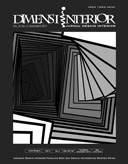GAYA SENI HINDU–JAWA PADA TATA RUANG KERATON YOGYAKARTA
 :
:
https://doi.org/10.9744/interior.9.2.108-118
Keywords:
Style, Hindu-Javanese, space, Sultan Palace.Abstract
The Sultan Palace is one of the art cultural heritages that has now become a historical artifact, containing important information regarding art styles as a result of acculturation. This study is a qualitative study with a descriptive analysis method. The approach used is the historical approach and interpretation to find traces of the historical development of the Hindu-Javanese art style and the meaning behind the spatial form of Keraton Yogyakarta. The results of the research explain that prehistoric art is purely determined by custom, and at the same time take its role in the formation of cultural arts during the Hindu period. Art activities were carried out to ensure that the survival of religion is based on an agricultural system of the people's lives who regard the king as having the supreme authority who is equal to the gods. The expression of the art in layout plan of Yogyakarta palace basically follows the theological concept of Vastusatra and the mythic beliefs of the pre-Hindu society which still continues today. Based on the results of the study, it was found that the expression of the form and content of the layout plan was inspired by religious considerations, and does not perform as mere aesthetic expression. The alignment of the micro universe with a macro universe is a reflection of the pre-Hindu and Hindu periods. Changes occurred as a form of acculturation, especially in the aspects of building orientation and spatial arrangement of Keraton Yogyakarta.














